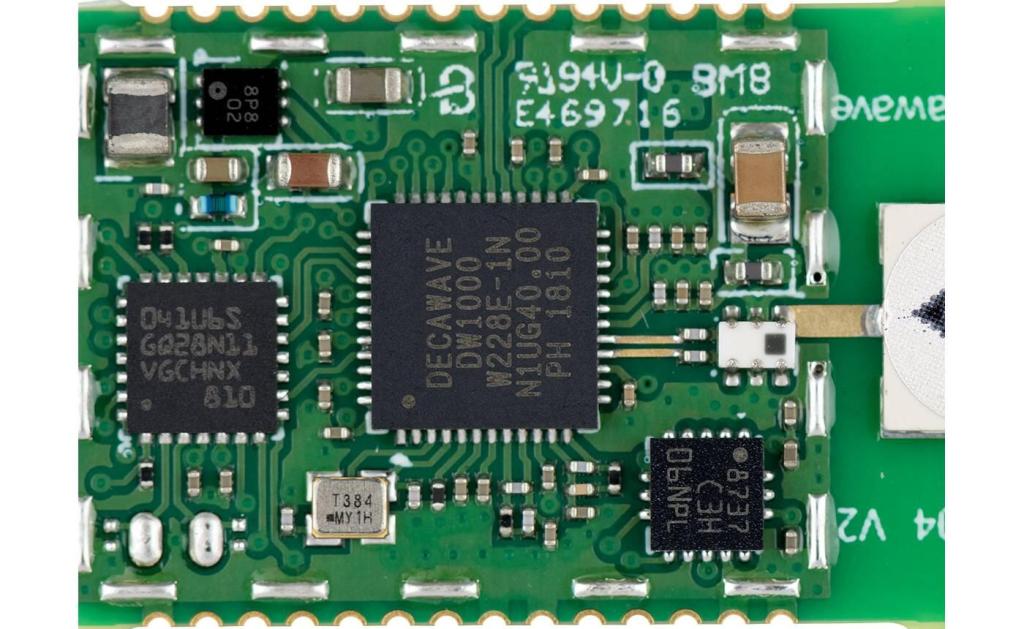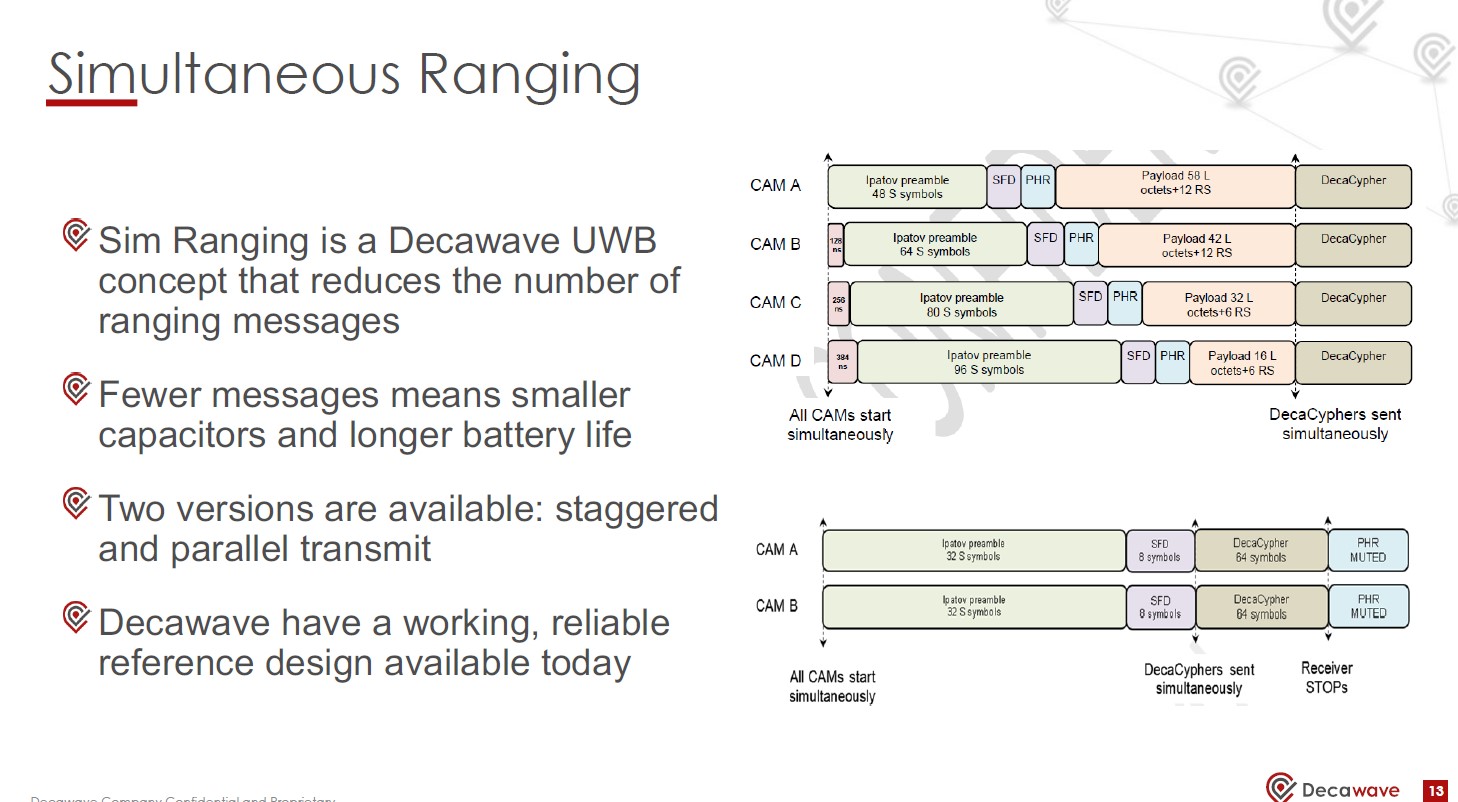Qorvo Acquires UWB Chip Provider
Article By : Nitin Dahad

With UWB expected to significantly proliferate as a result of the Apple effect, the Irish fabless chip company was an attractive acquisition target.
When we said in December that the rebirth of ultra-wideband (UWB) technology was one of the pivotal events of 2019 that would impact 2020, we didn’t expect the first big acquisition of the year in the chip industry would be a UWB chip developer.
But that’s just want happened this week. Decawave, a fabless semiconductor company that develops UWB technologies, chips and modules, has been acquired for a reported $400m by Qorvo, a developer of radio frequency (RF) ICs.
Decawave said the acquisition will advance market penetration of IR-UWB (impulse radio UWB), which enables more precise location information compared to other wireless technologies such as GPS, Wi-Fi and Bluetooth. IR-UWB technology enables accurate indoor location services, secure communications, context aware user interfaces and advanced analytics.
Decawave was founded in Dublin in 2007 by CEO Ciaran Connell and CTO Michael McLaughlin. The co-founders had a vision that the new IR-UWB technology, based on a nascent IEEE standard, could deliver ultra-accurate location in a way that would revolutionize people’s lives like GPS did in the 1990s. The company believes that IR-UWB is on the verge of becoming the next essential component technology, like GPS, Wi-Fi and Bluetooth before it. It was a good sign for the company when Apple integrated UWB in its iPhone 11 last year.
When we spoke to CTO Michael McLaughlin and Decawave’s general manager for secure transactions, Luc Darmon, last fall, they told EE Times, “We had our first chip in the market seven years ago. We have eight million chips in the field, and have sampled 5000 customers across 40 different verticals, including industrial and automotive. We have been pioneering UWB in cars, created the UWB Alliance three years ago, and are also now part of the Car Connectivity Consortium.”
The acquisition by Qorvo is a major development for Decawave, whose chips are thought to be the first to be deployed in a UWB-based key fob in selected Jaguar Land Rover models. Jaguar is claiming these are currently the only cars immune to keyless entry attacks (also known as relay station attacks), where a car thief uses a range extender to open a car and drive it away).
It’s timely given that UWB is gaining traction especially with Apple introducing the technology in its handset last year, and also that Qorvo is a key supplier to Apple. But more than this, McLaughlin and Darmon told us, “The introduction of the new iPhone with a UWB chip inside is a significant milestone in the industry. Having a major consumer brand introduce this technology will enable growth in the ecosystem, including the IoT ecosystem. It will create a hockey stick effect for the market. One of the first applications will be secure car access, and then this is likely to be carried through to access control for door locks too.”
They also said that previously, to enable the extra security enabled by UWB the challenge was that consumers would have to carry an extra device. But now that it is built into the phone, they don’t need to do that anymore. “This will create a network effect [of adoption]. There will be a big boost in the consumer market, in the IoT, in enterprise, and in asset tracking. All capable of now adding super accurate location.”
The company said UWB technology enables manufacturers to deliver convenience and ease of use through keyless entry systems while significantly increasing the essential security of those systems. We were told that its UWB technology has been built into the automotive industry’s most secure car entry systems since 2017 and it is the originator of the secure protocol built into the new IEEE 802.15.4z UWB standard.
It has so far been shipping its DW1000 single chip wireless transceiver, but when we spoke to the executives at Decawave, they had told us they are working on their next-generation chip, which will enable simultaneous ranging to significantly reduce power consumption.
McLaughlin told us, “Power consumption is just as important in cars, and in the new chip, which we’re already seeing a lot of interest, we have reduced the peak current dramatically, to reduce power consumption even further. We have sampled around 30 customers already.”
He added that the new chip has a revamped RF architecture which will also address frequencies in Japan (6.5GHz to 6.8GHz). “We have managed to get 28 components down to nine. It will be even lower power consumption than BLE. UWB doesn’t need to be power hungry.”

The drive toward much more secure keyless-entry systems in the automotive market mirrors similar moves across the wireless industry to develop next-generation secure transaction solutions. UWB technology is at the heart of both developments due to its unique ability to use high-accuracy location data to ensure a secure connection between devices that can’t be mimicked or intercepted. As adoption increases, this enables not only easier access to cars and payments, but has the potential to allow new applications, such as sophisticated vehicle-sharing schemes without the need for physical keys.
UWB has the ability to measure relative location of devices to levels of accuracy unmatched by any other wireless technology. When combined with highly secure, unique identifiers, UWB enables the creation of a ‘secure bubble’ that ensures that the communication between two objects, such as a car and its keys, is denied if the distance between them goes beyond a pre-defined threshold.
Connell, commenting on the acquisition by Qorvo, said, “We have created an incredibly unique technology, but we understand that to embrace the opportunity in front of us, we will need greater resources to execute at scale, accelerate our innovation and product launches and to continue to support our growing customer base with the same level of service. Joining forces with Qorvo’s leading expertise in RF technology, their experience in serving very high-volume markets like mobile but also the thousands of customers in industrial and enterprise, is, for Decawave, a perfect combination to scale and further accelerate the adoption of IR-UWB.”
McLaughlin added, “From proving a new technology, to building new markets and to today joining a tier 1 semiconductor company, the past 12 years have been a challenging and fantastic journey.”
Eric Creviston, president of Qorvo Mobile Products, said, “We’re very pleased to welcome the Decawave team, which we believe will enhance Qorvo’s product and technology leadership while expanding new opportunities in mobile, automotive and IoT. We look forward to building on the groundbreaking work that Decawave has done and helping to drive new applications and businesses using their unique UWB capability.”
Investors in Decawave who have benefited from this exit include lead investor Atlantic Bridge, Act Venture Capital, Summit Bridge, Enterprise Ireland and business angels. In 2017, ST New Ventures, a venture arm of STMicroelectronics, also invested as part of a $2.5 million funding round IR-UWB technology enables accurate indoor location services, secure communications, context aware user interfaces and advanced analytics. interestingly ST New Ventures was originally established by Loic Lietar, who then went on to co-found GreenWaves Technologies.
In its press statement this week, Decawave and Qorvo said they will be continuing to contribute to the IEEE, Car Connectivity Consortium, FiRa and UWB alliance to define next generation PHYs and protocols, ensuring interoperability across applications and fueling IR-UWB adoption; accelerate the roadmap of ICs and modules, utilizing their respective R&D strengths and product portfolio to bring even more IR-UWB solutions to market; and pursue existing partnerships and investments in enablement to offer flexible and easy to integrate IR-UWB solutions to its customers.